THE CONTROVERSY BEHIND MOTHER TERESA AND THE LIE OF HER SAINTHOOD
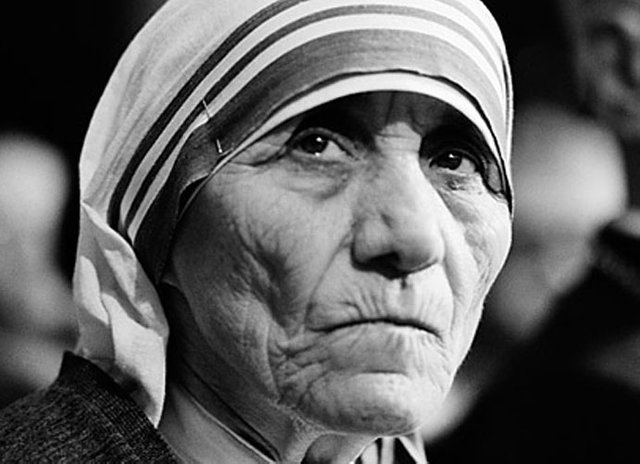
On September 4th 2016, Mother Teresa was declared a saint by Pope Francis in a ceremony at the Vatican. Her work with the sick and the poor have made her an international Catholic Church superstar and she is worshiped by millions around the world. But was Mother Teresa really the woman that the Church and the Media present her to be?
HOW TO BECOME A SAINT - MOTHER TERESA'S 'MIRACLES'
The Albanian-Indian Mother Teresa, whose original name was Anjeze Gonxhe Bojaxhiu, died on September 5th 1997. The canonization process, by which a Catholic can be recognized as a saint, began shortly after her death. According to the Catholic Church, an ‘investigation’ regarding a person’s sainthood can be opened no sooner than 5 years after their death. John Paul II waived that part of the process especially for Mother Teresa as the scandal ridden Catholic Church was in an urgent need of a new ‘icon’.
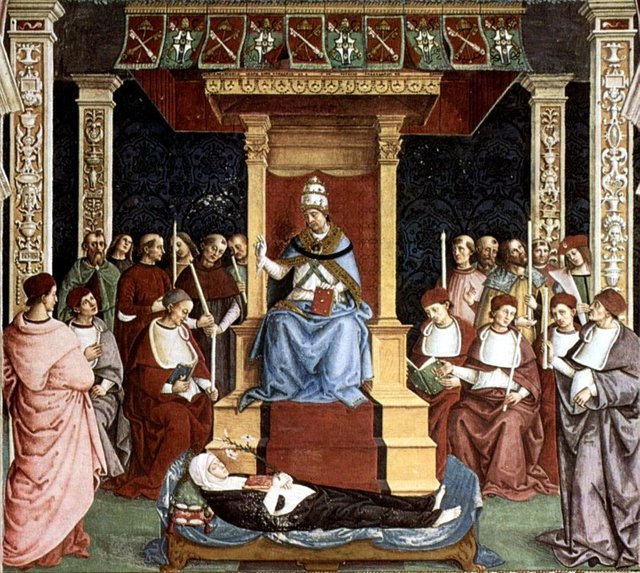
Probably the most crucial (and final) step before canonizing someone as a saint, is the verification of 2 miracles which must have been performed by the potential saint after his or her death. Mother Teresa’s first miracle was recognized in 2002. The Vatican claimed that a woman, Monica Besra, had her abdominal tumour miraculously healed after putting a locket with Mother Teresa’s picture on her belly. But the miracle created a huge amount of controversy. Dr Mustafi, one of Besra’s doctors, claimed that the ‘tumor’ was actually a cyst caused by Tuberculosis. Besra’s husband said that his wife was cured after a 9 month pharmaceutical prescription offered by her doctors. Officials at the hospital where Besra was treated claim that they have been pressured by Catholic representatives to accept Besra’s healing as a miracle. The patient’s medical records are conveniently withheld by an official of the ‘Missionaries of Charity’, Mother Teresa’s main charity organization.
Her second miracle took place in Brazil in 2008. A man with ‘multiple brain tumors’ prayed to Mother Teresa and, miraculously again, was cured. Later on, the man’s name was revealed to be Marcilio Haddad Andrino and his ‘brain tumors’ were in fact ‘multiple brain abscesses’. When his doctors examined him, they actually noted that the abscesses had not disappeared but they were ‘receding’. Still, Pope Francis had no problem recognizing this as Mother Teresa’s second miracle. The road to sainthood was now wide open.
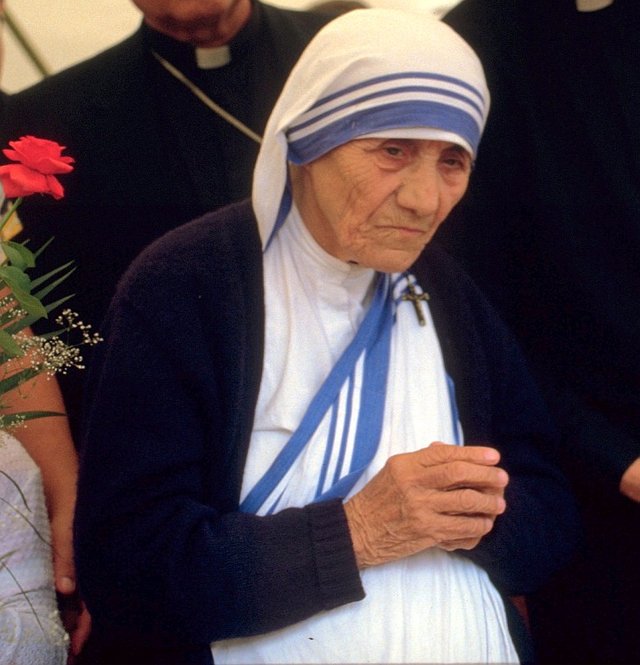
THE CREATION OF THE INTERNATIONAL CATHOLIC ICON
Even though Mother Teresa had received some recognition of her work, mostly in India, she was not well known around the world until 1969. Her international fame began in that year, after a documentary called ‘Something Beautiful for God’ was aired on BBC. It was mainly filmed in Mother Teresa’s ‘Home of the Dying’, a place where poor people with terminal diseases were taken to die with dignity. The documentary’s success was partly attributed to the director’s claims that the extremely bright and well lit footage taken, despite the poor lighting conditions inside the ‘Home of the Dying’, was due to a miraculous, divine light emitted from Mother Teresa herself. The filming crew in later interviews stated that the excellent quality of the footage was due to the high-tech and light sensitive equipment used, but their statements were now irrelevant. A new Catholic celebrity had been born.
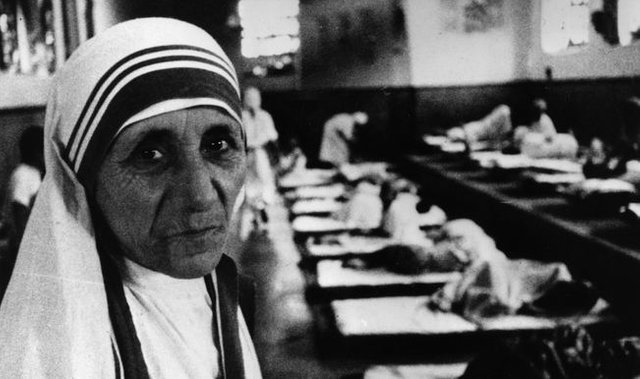
HOME OF LOVE OR PLACE OF SUFFERING?
The ‘Home of the Dying’ was for a long time Mother Teresa’s hallmark charity project. But quite frequently, volunteers and visitors who had the chance to see the hospice in person, realized that there was a dark secret hidden deep inside it. The nuns who worked there were in no way qualified to offer medical attention or any type of critical care to their terminally ill patients. Their lack of medical knowledge was also evident in the way they handled the patients and the limited medical equipment they had available. Needles were rinsed under water and were later re-used with no consideration to the health of the patients but also the workers’ themselves. To make things worse, there have been reports of patients who could have been potentially cured if real medical attention was given, but the sisters’ lack of medical knowledge did not allow them to tell such patients apart from the really terminally ill.
The building itself was small and overcrowded with few windows, no chairs, stretchers instead of beds and no outside yards, gardens or common areas. Patients had to defecate in front of each other and overall their quality of life was non-existent. Terminally ill patients always require strong and carefully chosen analgesia but in the ‘Home of the Dying’ they were lucky enough if they received small doses of aspirin or ibuprofen. To make things worse, there are numerous rumors that the patients, Hindu in their majority, were baptized as Christians right before dying in order to be ‘guaranteed a place in Heaven.’
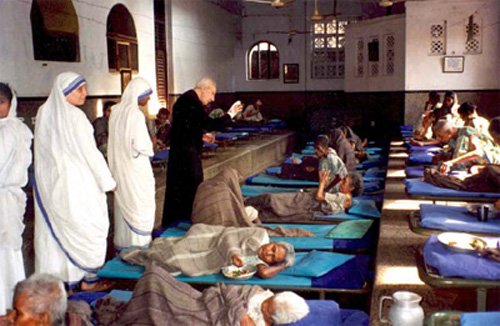
But why would Mother Teresa remain oblivious to what was happening in her own charity? The answer comes from Mother Teresa’s own words:
I think it is very beautiful for the poor to accept their lot, to share it with the passion of Christ. I think the world is being much helped by the suffering of the poor people.
Mother Teresa knew exactly what was happening. But as a religious fundamentalist, she believed that suffering, just like Jesus did on the cross, was a gift directly from God. Pain and disease in this life was for her, the easiest way to Heaven in the afterlife. God’s way and choice of fate for her patients, was in no way to be challenged or opposed – it just had to be accepted.
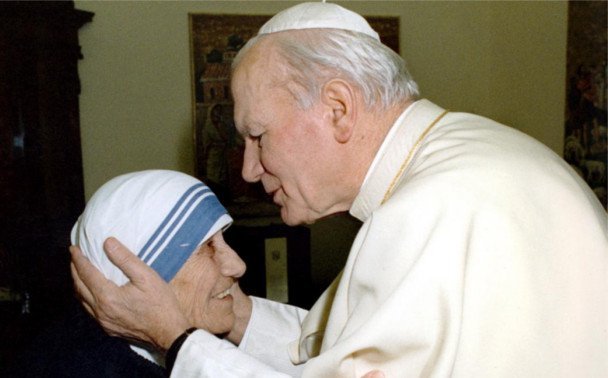
HYPOCRISY AND MANIPULATION
Mother Teresa’s own words can be regarded as hypocritical. How can someone who sees suffering as a means of salvation and in some cases even a ‘blessing’, ever be responsible to help the sufferer? It is simply impossible to alleviate something that you believe in so much. But the hypocrisy of her actions doesn’t stop there. With every opportunity she reminded the world that the poor's well being and fighting poverty were her main priorities. But at the same time the tens of millions she gathered from the international charities were not spent on the poor, but rather stored in the vaults of the Vatican or invested in building hundreds of homes around the world were nuns could be trained in order to continue spreading the religious propaganda. Instead, she preached to the poor how abortion and contraception were the greatest evils in this world and how either would lead them far away from the path of God. The poor were her main concern, yet she had no problem meeting and receiving a generous donation from the dictator of Haiti Jean-Claude Duvalier who lived in luxury by taking advantage of his own people. She gladly asked a judge to show leniency towards the perpetrator behind one of USA’s biggest frauds, Charles Keating – just because he had donated money to her charity a few years back. She claimed to be simple and humble, yet she never missed a meeting with the world’s most well known people, such as President Reagan and Princess Diana.
And perhaps, she saved her biggest hypocrisy for last: During her final years, when she knew she was dying she decided to be hospitalized in the world’s best hospitals and receive medical care by the top physicians of her time. She underwent heart surgery in an effort to save her life but eventually died in a comfortable hospital bed in Calcutta, not far away from her ‘Home of the dying’.
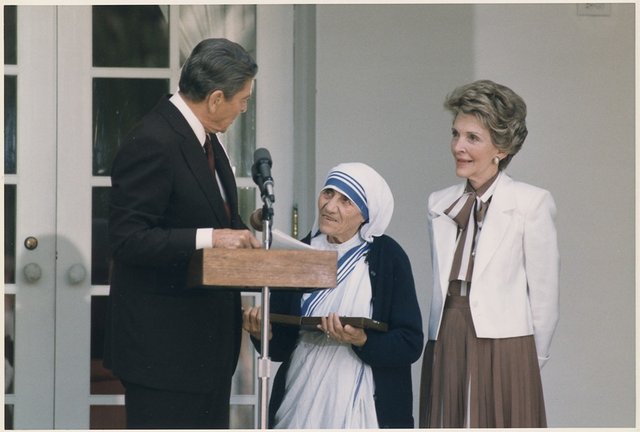
But despite my tough criticism, I do believe that Mother Teresa was a victim of her own fame. Willingly or not, she became part of a Catholic agenda which aimed to keep their supporters closer and spread their beliefs around the world. Very frequently people need symbols and icons to identify with if they are to stay within and support any organized group such as a religious one. Mother Teresa was manipulated into becoming such an icon and her name continues to be taken advantage of long after her death. Empathy and guilt have been hardwired into the human mind throughout its evolution and the heads of the Catholic Church know well how to use that to their benefit.
-CT.
============================================================================
Sources:
1. https://en.wikiquote.org/wiki/Mother_Teresa#2010s
2. https://en.wikipedia.org/wiki/Mother_Teresa
3. https://en.wikipedia.org/wiki/Charles_Keating
4. https://en.wikipedia.org/wiki/Kalighat_Home_for_the_Dying
5. http://www.huffingtonpost.com/2013/03/04/mother-teresa-myth_n_2805697.html
6. https://en.wikipedia.org/wiki/Jean-Claude_Duvalier
7. Christopher Hitchens – The Missionary Position
Hello @nulliusinverba,
It gives us pleasure to inform you that you have been chosen as a featured author by the @robinhoodwhale initiative.
Learn more about the Robinhood Whale here!
We hope to see you continuing to post some great stuff on Steemit!
Good luck!
~RHW~
thanks RWH :)
@nulliusinerba
Mother Teressa.
The Original Pump & Dumb
spot on :D
Christopher Hitchens, the celebrated intellectual, first clued me in to the Mother Teresa bamboozle. Here is a YouTube of him denouncing her hypocrisy and other shortcomings:
oh come on leave this dude out. He had many bad things to say about Lady Dianne too. He became famous because of his anti-conformism. lol
Believe it or not, I agree with some of the things you wrote about. (and I am from Albania, I am supposed to protect her :P )
It would definitely be wrong in this case if the country you were born in affected your view about Mother Teresa, so I m glad it doesn't. Regarding your comment above about Hitchens...I will have to agree with you to some extend. He did become famous because of his anticonformism, especially due to his claims that religion affects negatively pretty much everything in life. A view with which I do not agree.
It's hard to say whether she was deliberately cruel and hypocritical, or whether her behavior is simply the result of her restricting and punitive beliefs, combined with a very likely severe depression. Time actually published an interview titled Crisis of Faith: http://time.com/4126238/mother-teresas-crisis-of-faith/ where she talked about a "darkness," "dryness" and "loneliness" and separation from people and from God that no one knew about.
I remember reading it about ten years ago, and it has stuck with me ever since, that her personal life and self-perceptions were SO FAR from what the world made her out to be.
I don't think she was cruel on purpose, but I believe that her intentions are irrelevant. And you are right about her crisis of faith..just read the final quote under the '2000s' section here: https://en.wikiquote.org/wiki/Mother_Teresa#2000s
Wow. She really had it out for herself. That's really sad. I think her intentions ARE highly relevant. If a person does something cruel out of cruelty and senselessness, this is not the same thing as doing something cruel out of blind misguided behavior. And as such, the person should be viewed and appreciated differently, and judged differently.
It is essential to judge a person's character. This is the thing that prepares us and preserves us during real life experiences.
Cruelty is wrong regardless, but I think we can find ways to mitigate it when we know what we're looking at--learning from history. I think she inflicted some cruelty, but she also inflicted some good as well. What can we learn from her story?
This post has been linked to from another place on Steem.
Learn more about linkback bot v0.3
Upvote if you want the bot to continue posting linkbacks for your posts. Flag if otherwise. Built by @ontofractal